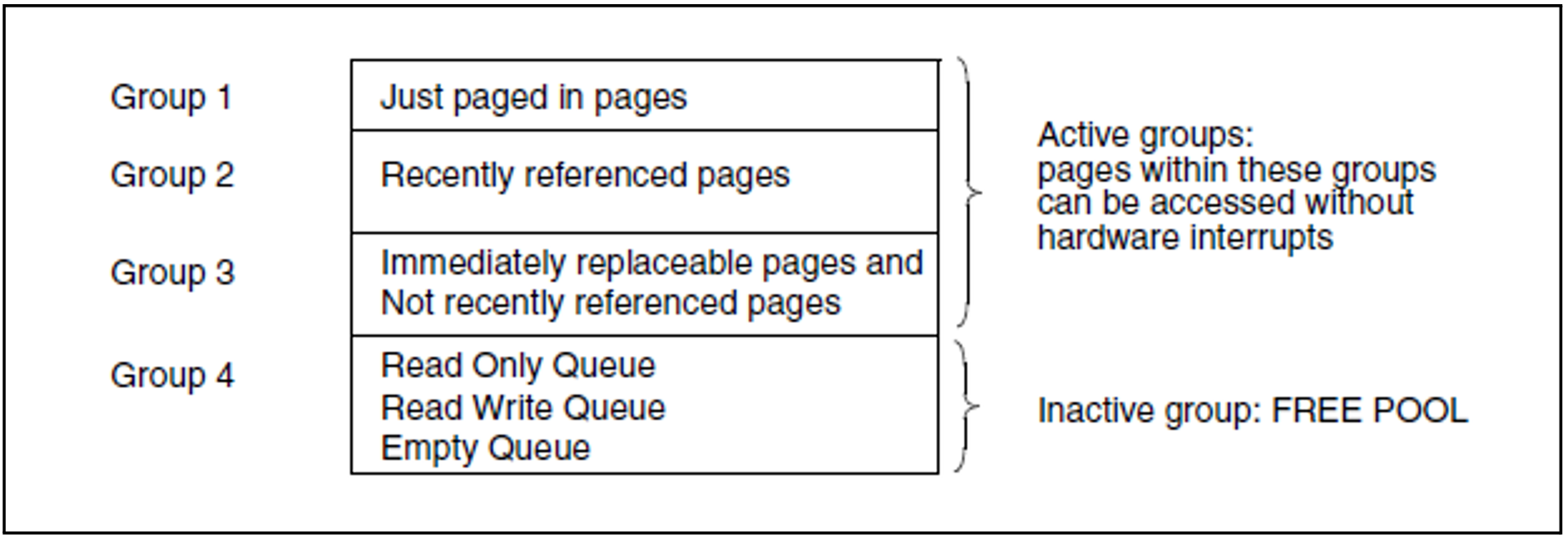The page management algorithm (system work setting method, SYS-WS) manages the main memory pages globally and the pages are split up into four groups according to their “access age” as follows:
The pages in each group are chained with one another.
Principle of execution
When the event “page not in main memory” occurs (page fault), a page frame from group 4 is filled by the requested page by means of a paging I/O operation (Page Read) and entered in group 1 (group transition 4 -> 1); reference bit = ON.
As a rule, as many pages as possible are kept active. As a result the “free pool” is relatively small. However, it must have a certain minimum size in order to satisfy paging requests that follow in rapid succession.
Once this minimum size has been reached, a routine is initiated to fill the “free pool” with pages from group 3 (group transition 3 -> 4).
Pages whose reference bit is ON are added to the end of the chain of group 2 and the reference bit is deleted.
Pages which are found twice in a row with reference bit=OFF are placed in group 4.
Group 3 continues to be searched until the required number of pages to fill the “free pool” has been found.
If there are not enough available pages in group 3, group 3 is filled by transferring all the pages in group 2 to group 3 (group transition 2 -> 3).
In the same way group 2 is then filled by rechaining all the pages from group 1 to group 2 (group transition 1 -> 2).
Since the paging requests both fill group 1 automatically and initiate the page replacement algorithm, consistency is ensured.
The simple SYS-WS algorithm results in a reduction in paging management outlay, albeit at the expense of reduced accuracy in determining the working set requirements of the individual tasks. The reduction in outlay is especially noticeable in the case of large main memories.
If a task is deactivated, it retains its working set even if it is in the inactive state. If the task is reactivated, no “page reclaims” are necessary to restore the working set.
While the SYS-WS procedure knows the UPG value (used pages) of every task, it has no means of determining which phase the task is in (even inactive tasks have a UPG value ≠ 0.) .
Calculation of the PPC value (planned page count) is therefore approximate: the UPG value is compared with an assumed mean working set value, dependent on the category type.
Since as many pages as possible are kept active, the total UPG value is practically always in the magnitude of the available paging main memory and has only limited relevance. The working set requirements are expressed exclusively by the PPC value. This value represents only a rough estimate. With todays large memory configurations advantages result from the fact that no outlay is necessary for estimating exact memory requirements, as they are superfluous.

